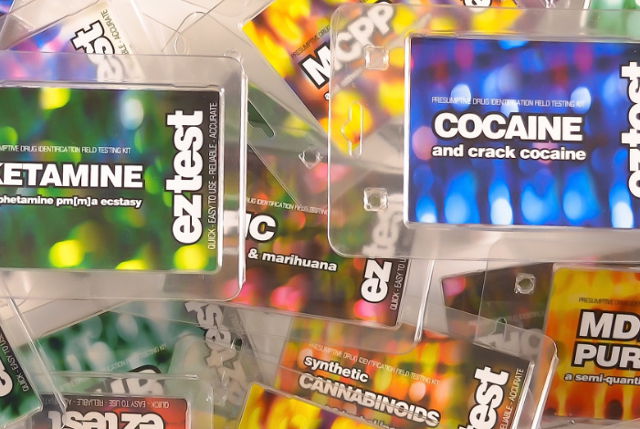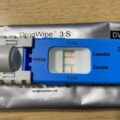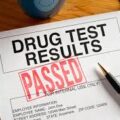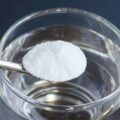Ez test kits are home drug testing kits used to analyze substances in order to acquire a general or greater understanding of what they contain. They are accurate and reliable home testing for ecstasy, cocaine, crack, legal highs and many more. Where possible, it is strongly recommended that the kits are used in conjunction with more accurate methods of testing.
The kits are not without flaws and where possible, these imperfections are highlighted. Testing can be carried out by anyone. The kits are quick, portable and uncomplicated – you will not need a chemistry qualification to use them.
What do these EZ tests do?
These tests indicate if one or more prescription or illegal drugs are present in urine. These tests detect the presence of drugs such as marijuana, cocaine, opiates, methamphetamine, amphetamines, PCP, benzodiazepine, barbiturates, methadone, tricyclic antidepressants, ecstasy, and oxycodone.
The testing is done in two steps. First, you do a quick at-home test. Second, if the test suggests that drugs may be present, you send the sample to a laboratory for additional testing.
What are drugs of abuse?
Drugs of abuse are illegal or prescription medicines (for example, Oxycodone or Valium) that are taken for a non-medical purpose. Non-medical purposes for a prescription drug include taking the medication for longer than your doctor prescribed it for or for a purpose other than what the doctor prescribed it for. Medications are not drugs of abuse if they are taken according to your doctor’s instructions.
What type of tests are these?
They are qualitative tests — you find out if a particular drug may be in the urine, but not how much is present.
When should you do EZ tests?
You should use these tests when you think someone might be abusing prescription or illegal drugs. If you are worried about a specific drug, make sure to check the label to confirm that this test is designed to detect the drug you are looking for.
How To Use EZ Test Kit
EZ Test Kits are very easy to use everywhere. Just follow the simple steps below.
Step 1 – Prepare some of the substance for analysis. Only a small amount is required, roughly 2mm by 2mm volume.
Step 2 – Knock the unopened ampoule several times against a hard surface to make any particles sticking to the side of the ampoule fall downwards.
Step 3 – Hold the ampoule in one hand and snap off the top part at the fracture line, using the index finger and thumb.
Step 4 – Keep the ampoule in the upright position and transfer your sample into the ampoule. After this place the cap on the opened ampoule.
** Ehrlich and Cannabis tests have a small granule in the cap which is a catalyst and also needs to be added. **
** One easy method for adding your substance is simply to add the sample to the top of the cap and place the cap on the opened ampoule. **
Step 5 – Allow the sample and the reagents/granule to mix. A gentle shake and turn can help.
Step 6 – Compare the colour change (if any) with the colours on the colour chart included in the packaging. Any colour change should fully develop within 1 – 2 minutes.
Step 7 – When finished, place the used ampoule in a sealed bag and dispose of it responsibly. Please do not litter.
Full instructions of use are included with every kit.
How accurate are these tests?
The at-home testing part of this test is fairly sensitive to the presence of drugs in the urine. This means that if drugs are present, you will usually get a preliminary (or presumptive) positive test result. If you get a preliminary positive result, you should send the urine sample to the laboratory for a second test.
It is very important to send the urine sample to the laboratory to confirm a positive at-home result because certain foods, food supplements, beverages, or medicines can affect the results of at-home tests. Laboratory tests are the most reliable way to confirm drugs of abuse.
Many things can affect the accuracy of these tests, including (but not limited to):
- the way you did the test
- the way you stored the test or urine
- what the person ate or drank before taking the test
- any other prescription or over-the-counter drugs the person may have taken before the test
Note that a result showing the presence of an amphetamine should be considered carefully, even when this result is confirmed in the laboratory testing. Some over-the-counter medications will produce the same test results as illegally-abused amphetamines.





